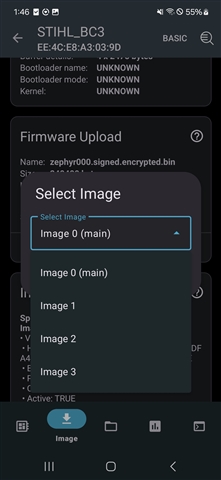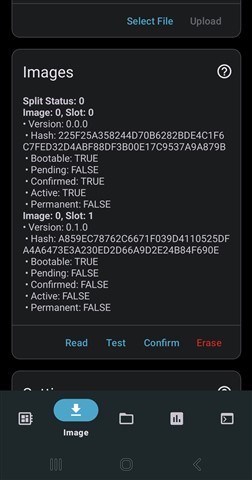Hello Team,
we are using Device manager app update to test software updates.

Q1. After choosing the update, there is an option to choose between image0(main), image 1,image 2, and image 3.. I tried to to do software update with image 0 and image1. Both Works. What is actually the goal/need of this option ? what does it do ?
Q2. there is a "Permamanen flag" showed in the App. As far as I know,MCU boot knows only about bootable,pending and confirmed flags.
I have noticed that the Permananet flag is set to true when the image set to "Confirm". What is goal/need of this permanent flasgs ? does MCUboot use this anyway ?

Q3. I see that the SMP BLE services and characteristics are hardcoded in Zephyr subsys source code. Is it always constant for SMP protocol ? Can we change this and use our own UUIDs ?
Regards
Adarsh

